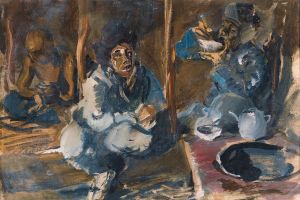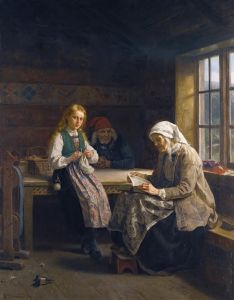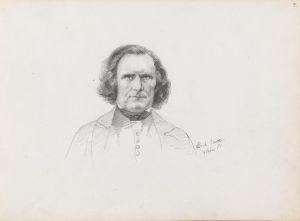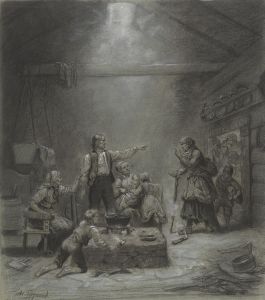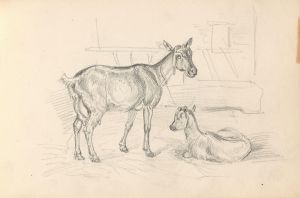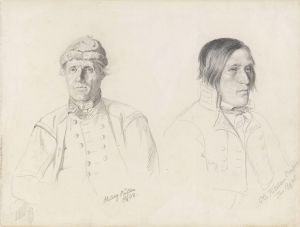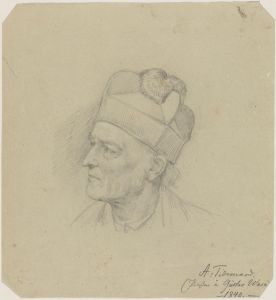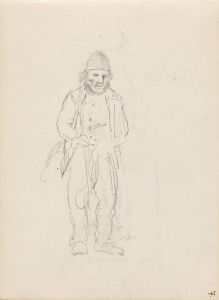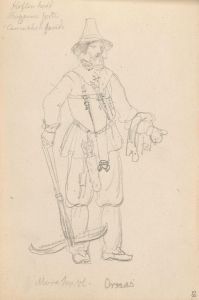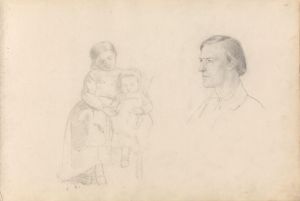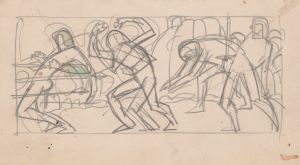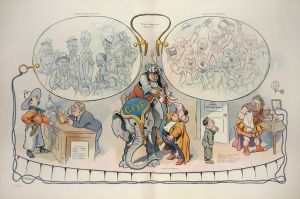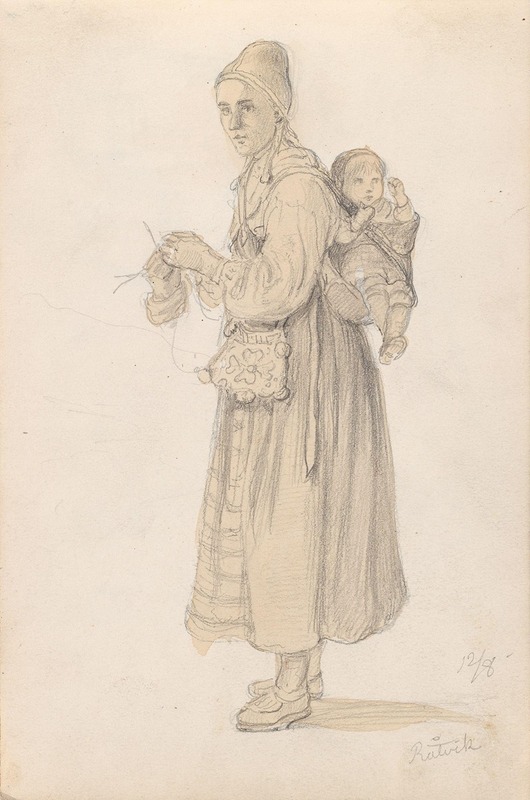
Strikkende kvinne med barn på ryggen, Rättvik
A hand-painted replica of Adolph Tidemand’s masterpiece Strikkende kvinne med barn på ryggen, Rättvik, meticulously crafted by professional artists to capture the true essence of the original. Each piece is created with museum-quality canvas and rare mineral pigments, carefully painted by experienced artists with delicate brushstrokes and rich, layered colors to perfectly recreate the texture of the original artwork. Unlike machine-printed reproductions, this hand-painted version brings the painting to life, infused with the artist’s emotions and skill in every stroke. Whether for personal collection or home decoration, it instantly elevates the artistic atmosphere of any space.
Adolph Tidemand was a prominent Norwegian painter in the 19th century, known for his detailed and realistic depictions of Norwegian folk life and traditions. One of his notable works is "Strikkende kvinne med barn på ryggen, Rättvik," which translates to "Knitting Woman with Child on Her Back, Rättvik." This painting is a fine example of Tidemand's dedication to capturing the essence of rural life and the cultural heritage of Scandinavia.
Adolph Tidemand was born on August 14, 1814, in Mandal, Norway. He studied art in Copenhagen and later in Düsseldorf, where he became associated with the Düsseldorf school of painting. This school was known for its detailed and realistic style, which Tidemand adopted and adapted to his own focus on Norwegian subjects. His works often depicted scenes from everyday life, emphasizing the customs, costumes, and landscapes of Norway.
"Strikkende kvinne med barn på ryggen, Rättvik" is a painting that reflects Tidemand's interest in the daily lives of ordinary people. The painting portrays a woman engaged in knitting, with a child secured on her back, a common practice in many rural communities. The setting is Rättvik, a locality in Sweden, which suggests that Tidemand was interested in capturing Scandinavian life more broadly, not just Norwegian scenes. This cross-cultural interest is evident in several of his works, where he explored themes and subjects from different parts of Scandinavia.
The painting is characterized by its attention to detail and the realistic portrayal of the subjects. Tidemand's use of color and light helps to create a vivid and intimate scene, drawing the viewer into the world of the woman and child. The woman's traditional attire and the serene expression on her face suggest a sense of contentment and dedication to her craft, while the child on her back adds a layer of warmth and familial connection to the scene.
Tidemand's work is significant not only for its artistic quality but also for its ethnographic value. During the 19th century, Norway was undergoing significant changes, with increasing industrialization and urbanization. Tidemand's paintings serve as a visual record of a way of life that was rapidly changing, preserving the traditions and customs of rural communities for future generations. His focus on everyday life and ordinary people was somewhat revolutionary at the time, as art had traditionally focused on historical, religious, or mythological subjects.
"Strikkende kvinne med barn på ryggen, Rättvik" is a testament to Tidemand's skill as a painter and his commitment to documenting the cultural heritage of Scandinavia. His works continue to be celebrated for their artistic merit and their contribution to the understanding of 19th-century Scandinavian life. Tidemand's legacy is preserved in various museums and collections, where his paintings continue to be appreciated by art enthusiasts and historians alike.
In summary, Adolph Tidemand's "Strikkende kvinne med barn på ryggen, Rättvik" is a significant work that captures the essence of Scandinavian rural life with precision and empathy. Through his detailed and realistic portrayal of everyday scenes, Tidemand has left an indelible mark on the art world, providing a window into the past and preserving the cultural heritage of his time.






